Abstract
1. The possibility was investigated that the facilitation of the transmission in the propriospinal-like system during voluntary contraction, documented in the companion paper (Burke, Gracies, Mazevet, Meunier & Pierrot-Deseilligny, 1992), is due to a decrease in presynaptic inhibition of afferents projecting to propriospinal-like neurones. 2. The radial nerve was stimulated to evoke presynaptic inhibition of the monosynaptic Ia projections to forearm flexor motoneurones (Berardelli, Day, Marsden & Rothwell, 1987) and, hopefully, of the afferent input to propriospinal-like neurones projecting to these motoneurones. 3. The propriospinal-like excitation of forearm motoneurones evoked from mixed afferent inputs was depressed by radial nerve stimulation, and this depression was long-lasting (200 ms). Despite the convergence of mixed nerve and cutaneous afferents onto common propriospinal-like neurones, the radial stimulation did not depress the cutaneous-induced excitation. This differential effect and the time course of the depression suggest that it results from presynaptic inhibition of mixed nerve afferents (presumably large muscle afferents) projecting to propriospinal-like neurones. 4. With voluntary contractions, phasic or tonic, the radial-induced depression of the propriospinal-like excitation evoked by mixed nerve afferents was much greater than at rest, but the cutaneous-evoked excitation was unchanged. Thus, with voluntary contractions, there was no evidence of decreased gating of the afferent input to propriospinal-like neurones whether the input was of muscle or cutaneous origin and it is concluded that changes in presynaptic inhibition cannot account for the facilitation of the transmission in the propriospinal-like system during voluntary contraction. 5. By contrast, presynaptic inhibition of the monosynaptic Ia projections to motoneurones was consistently reduced at the onset of contraction, and to a much lesser extent during a weak tonic contraction.
Full text
PDF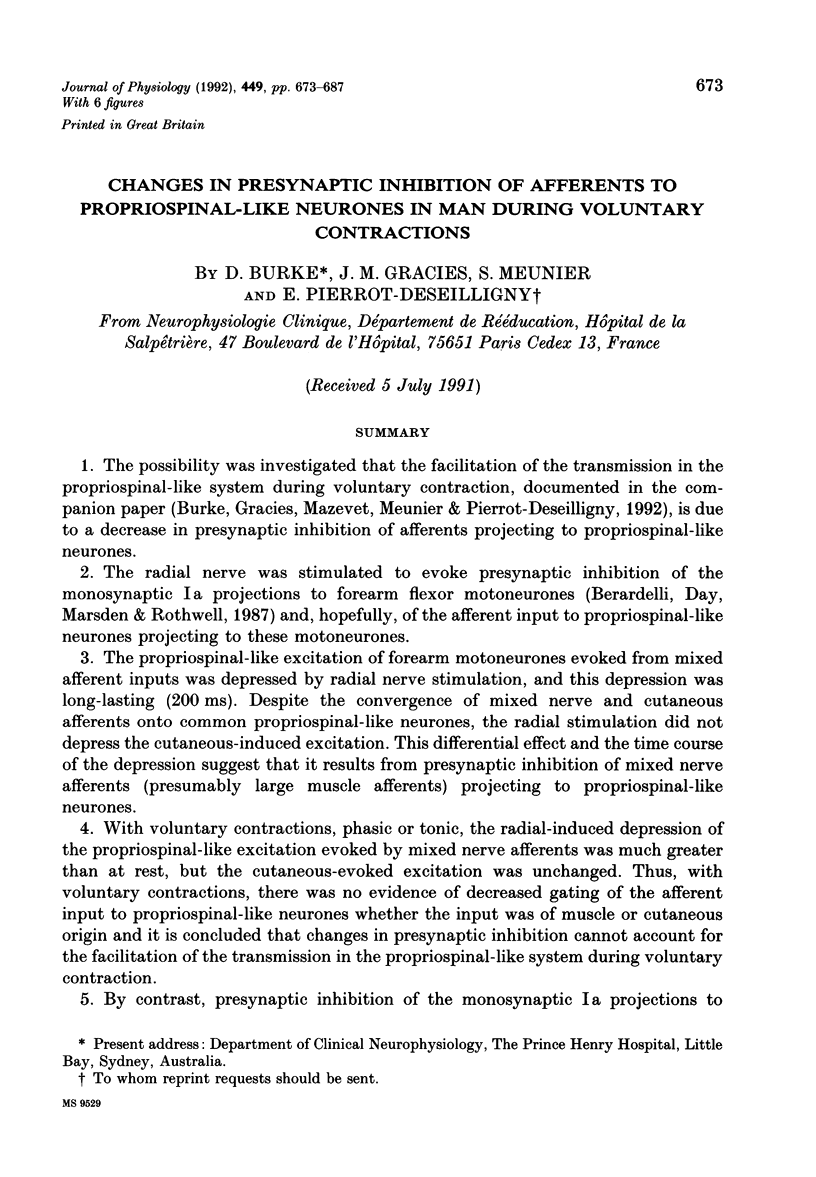
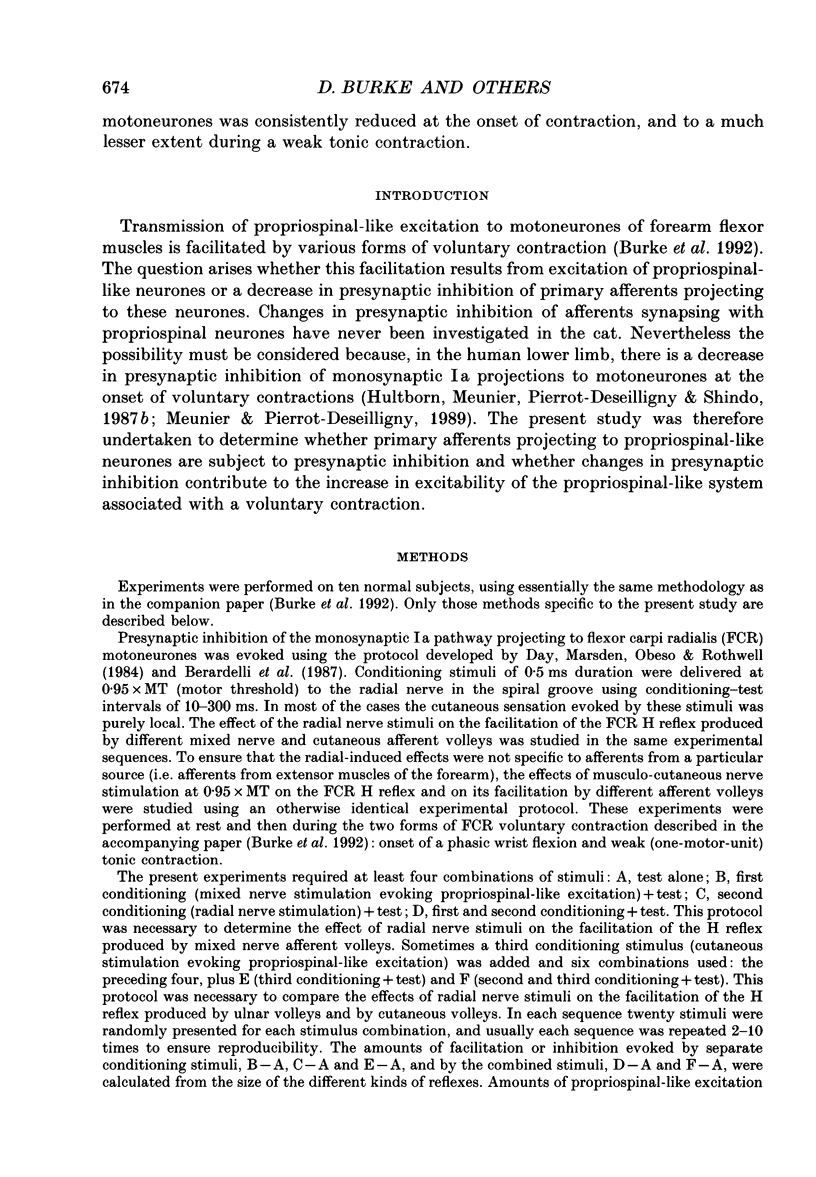
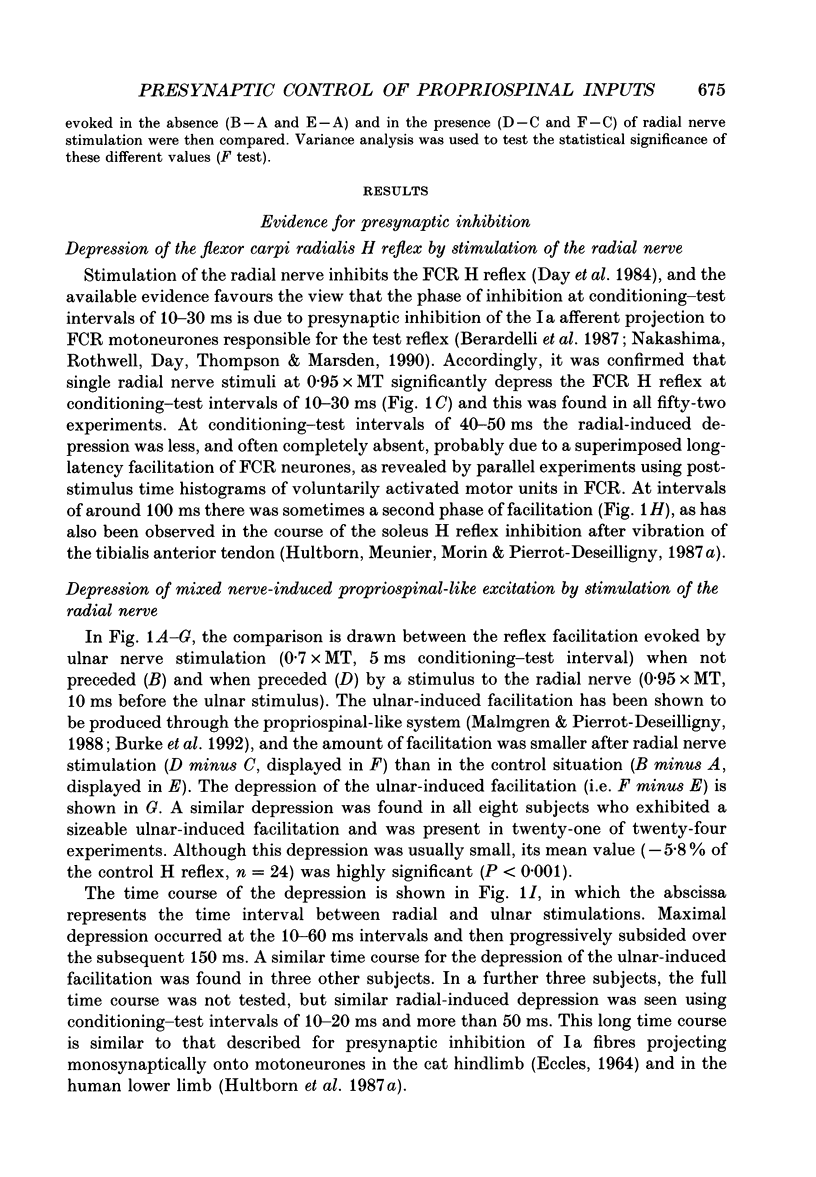
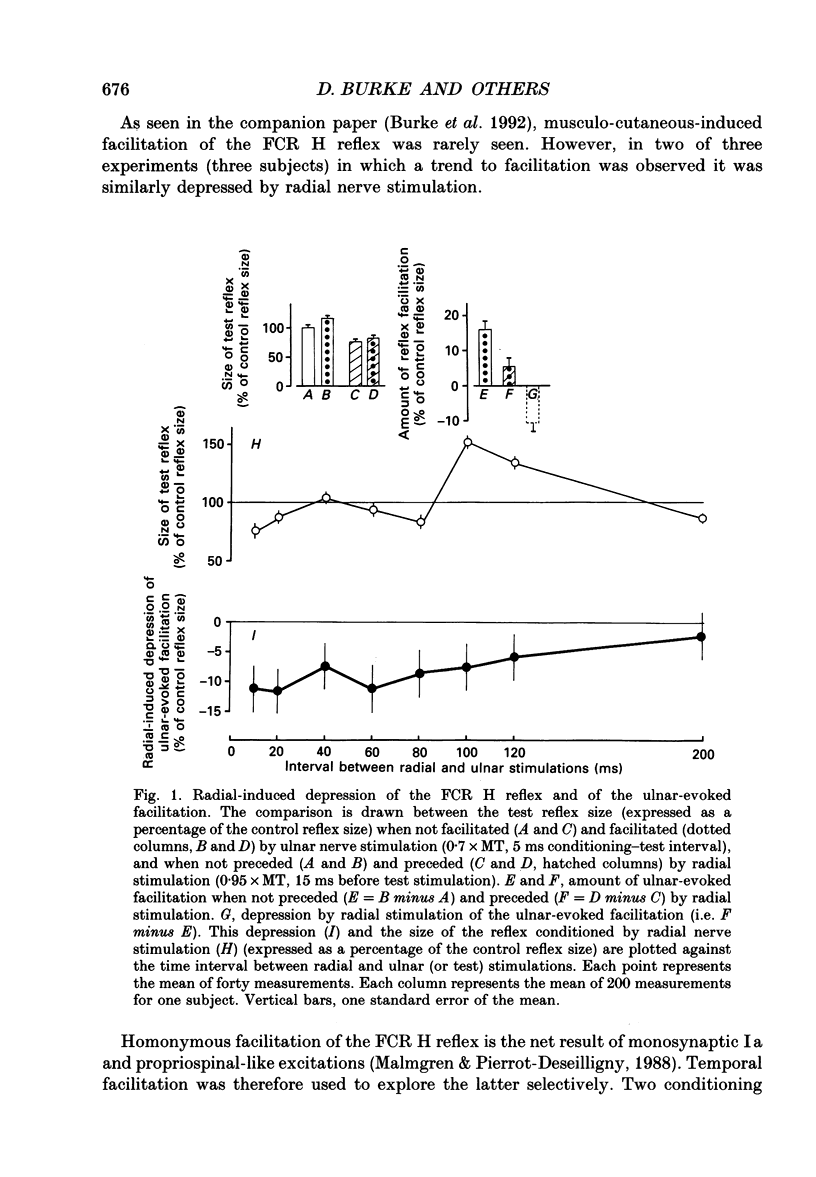
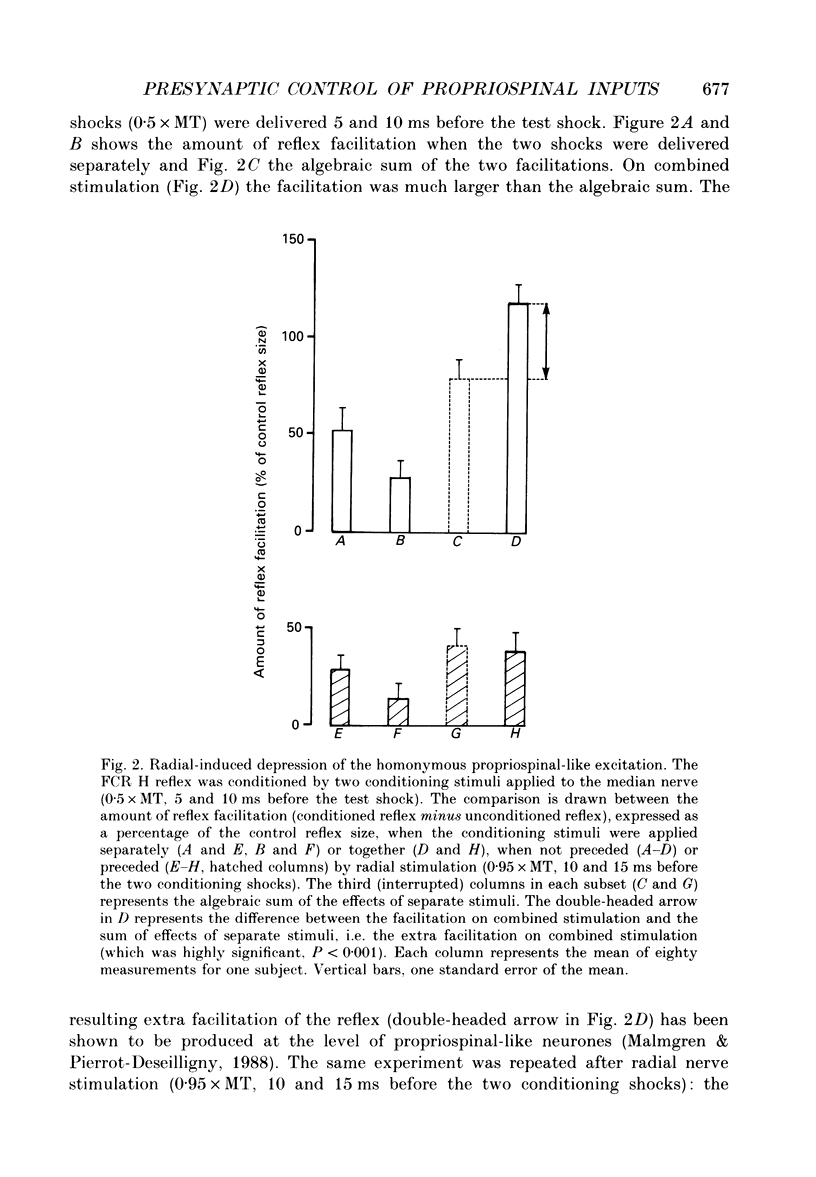
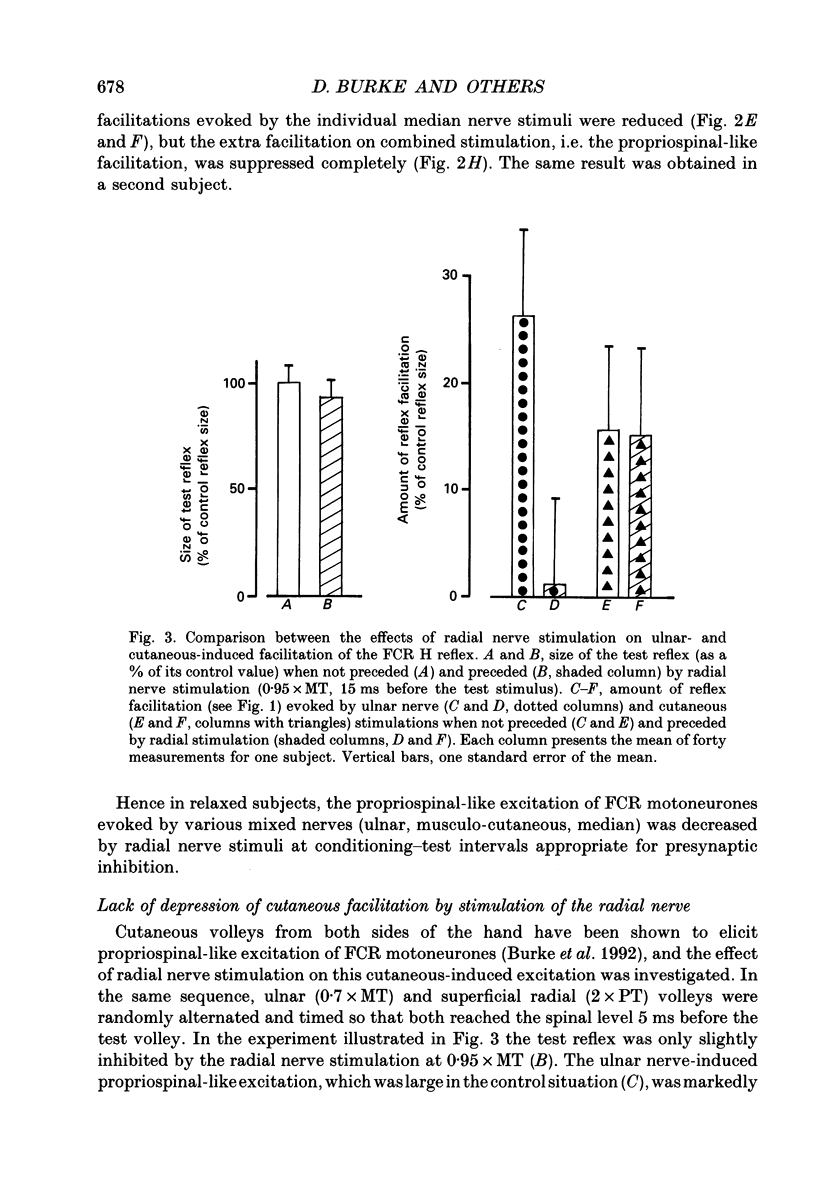
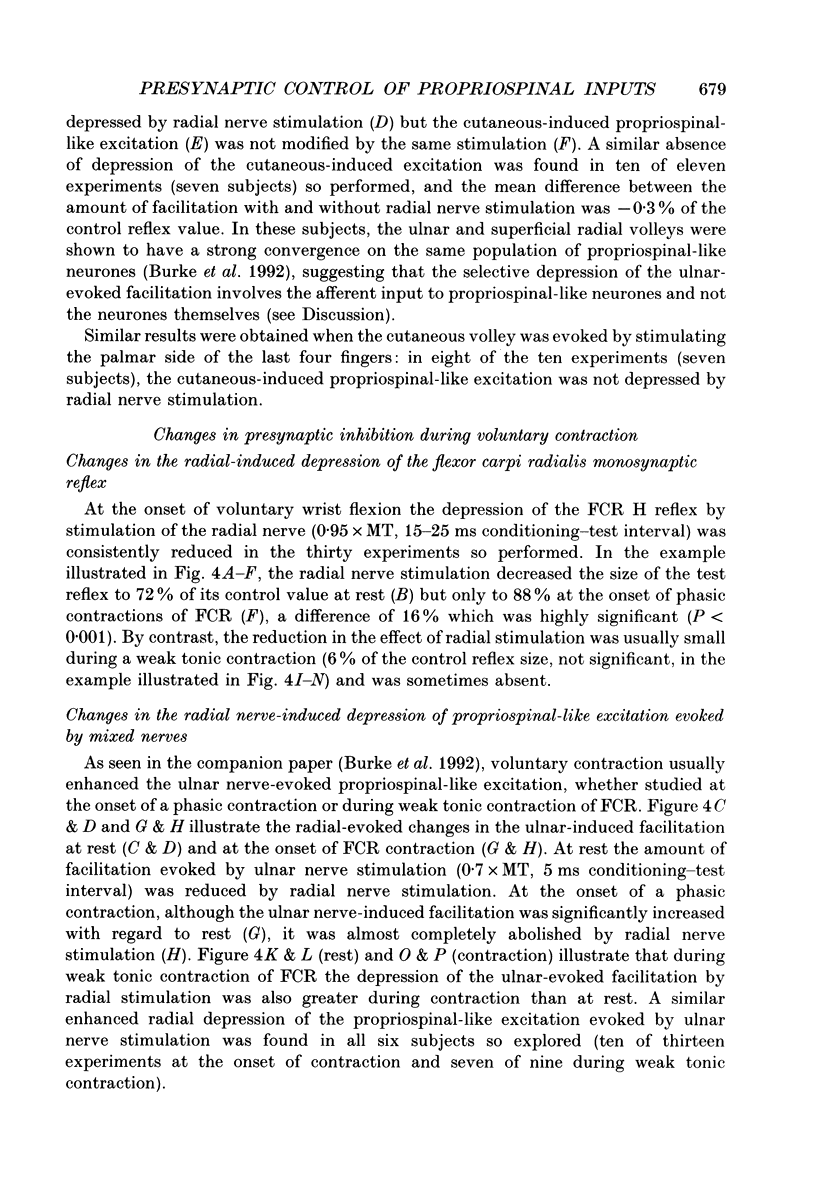
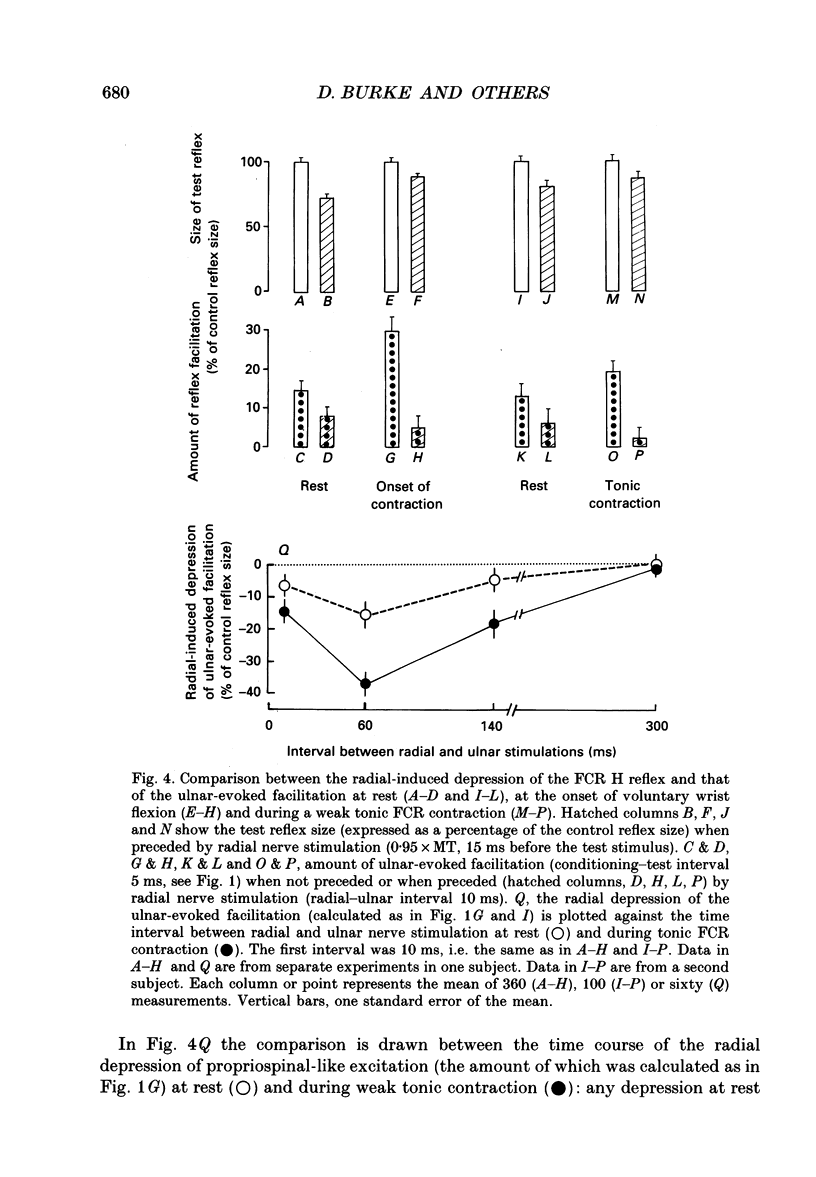
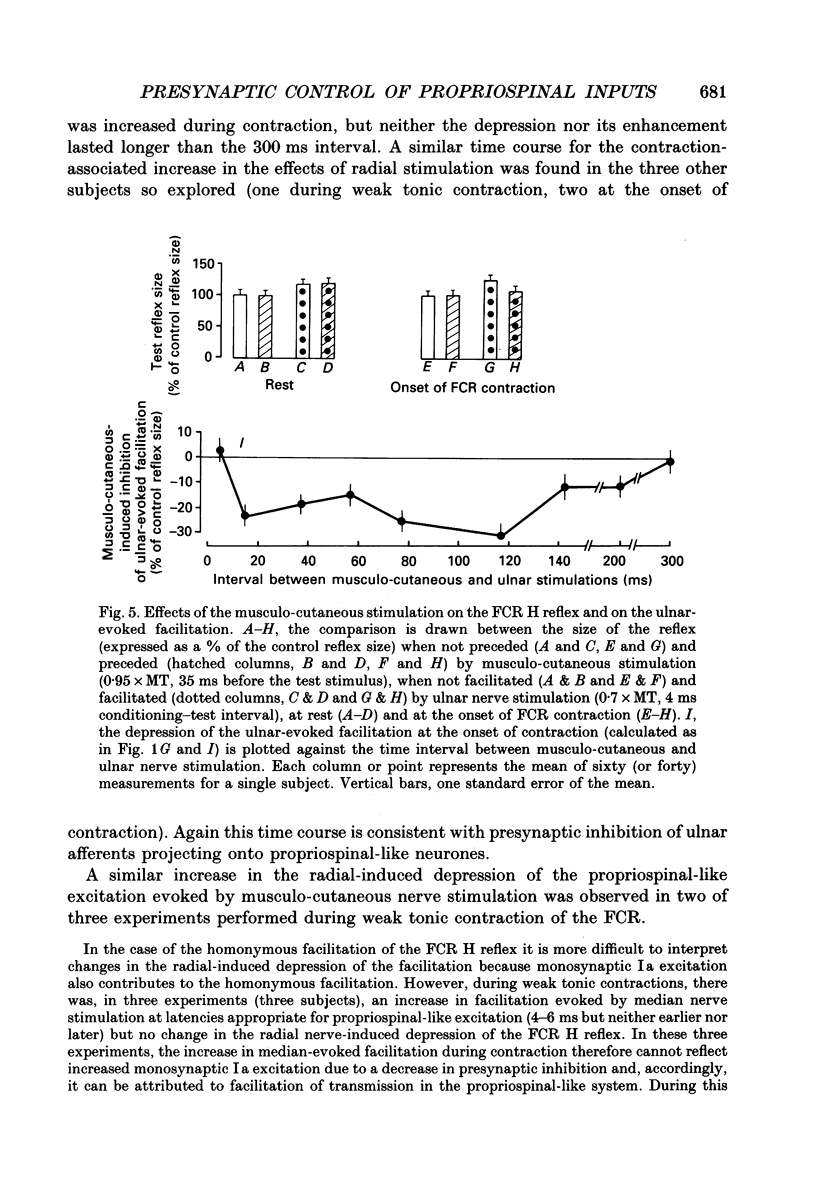
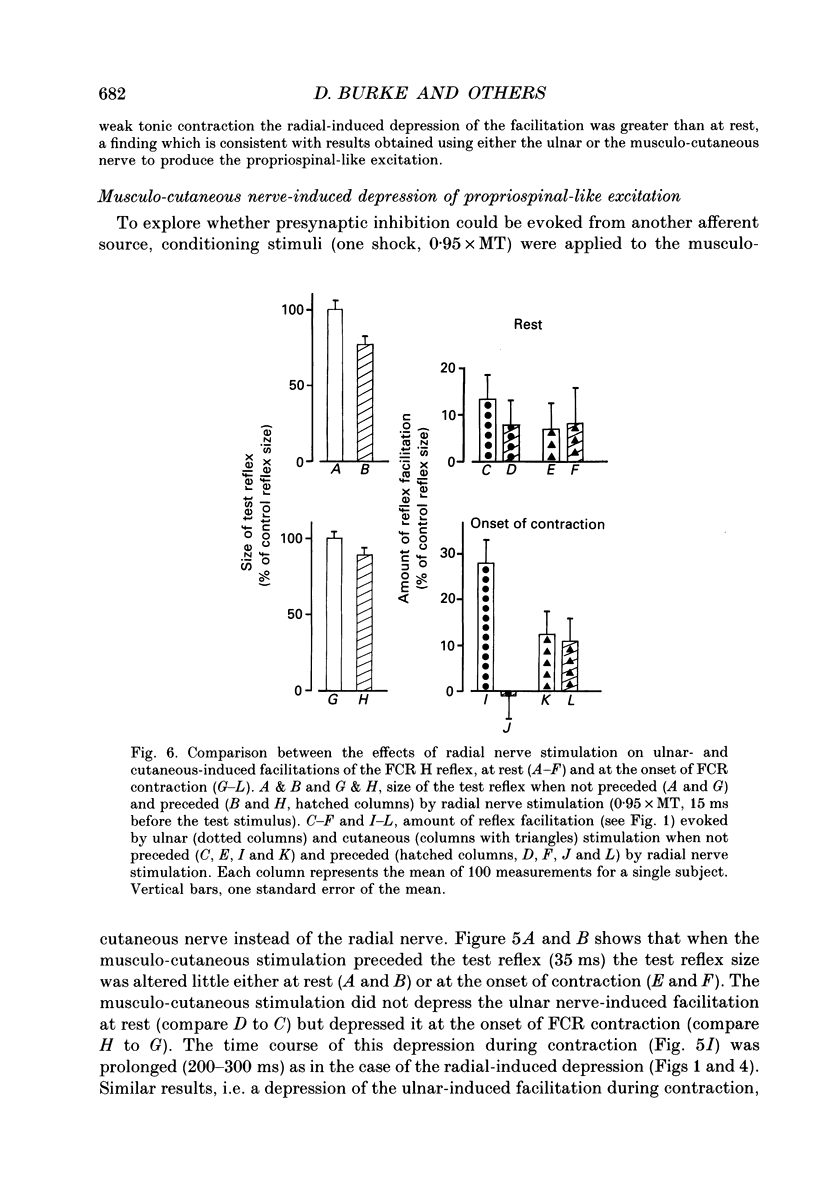
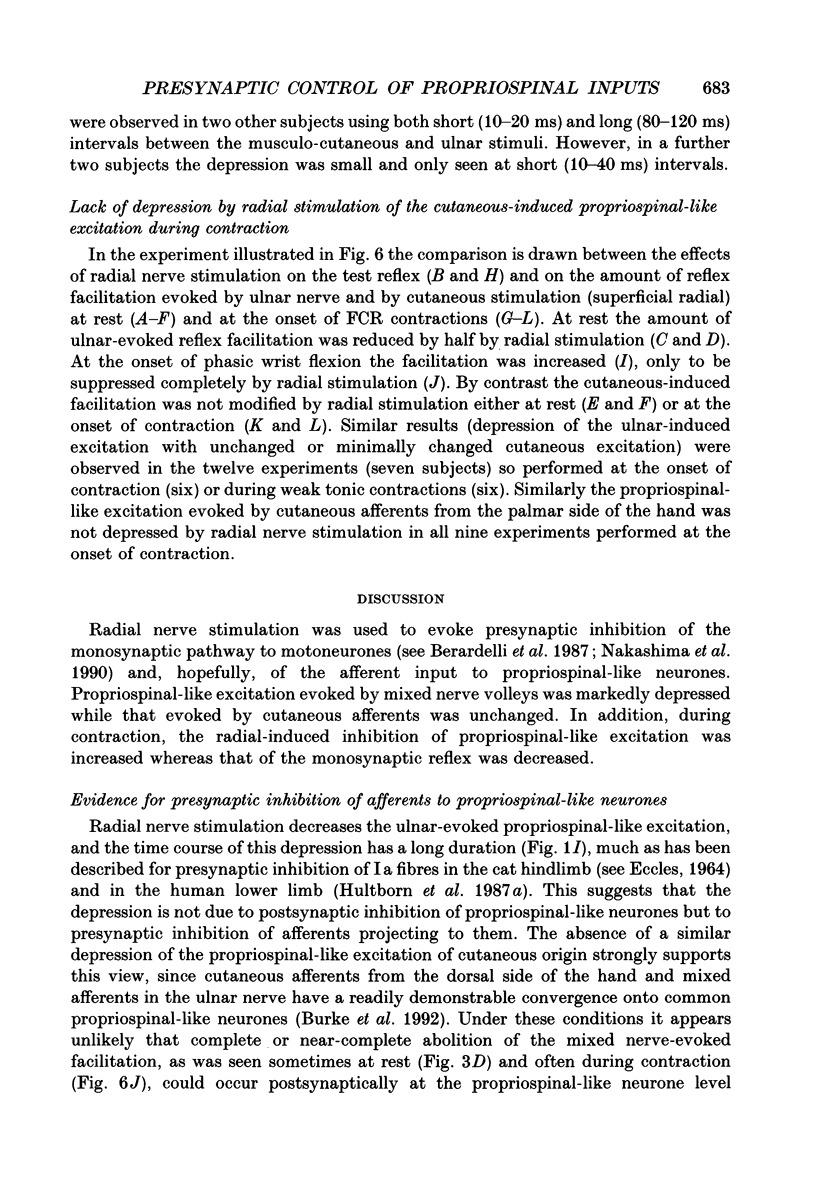
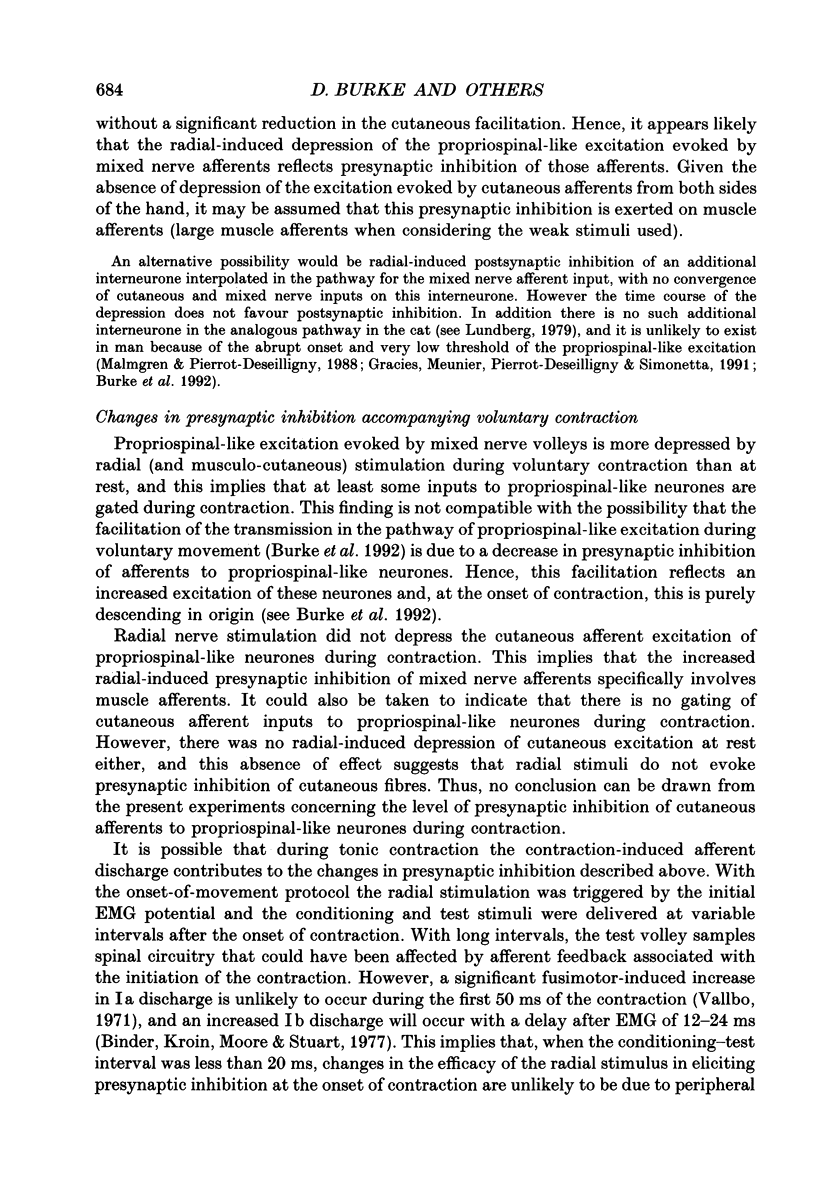
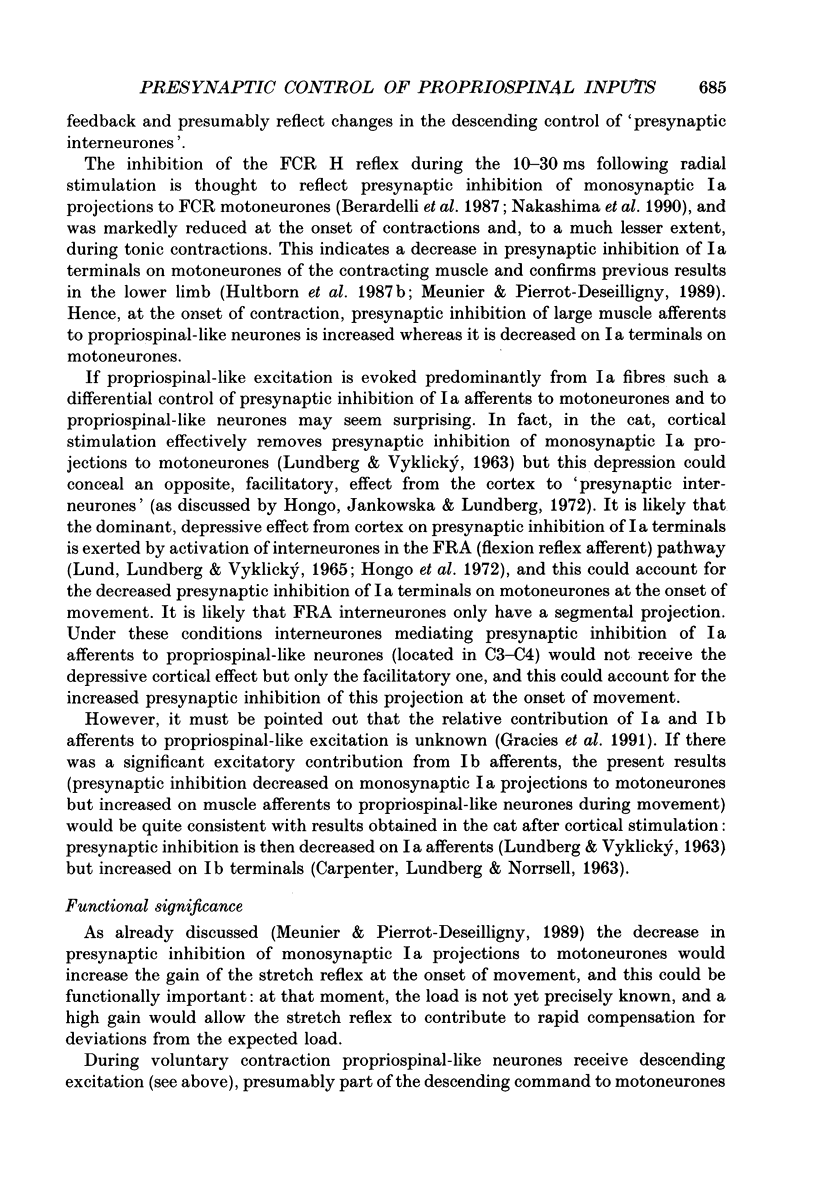
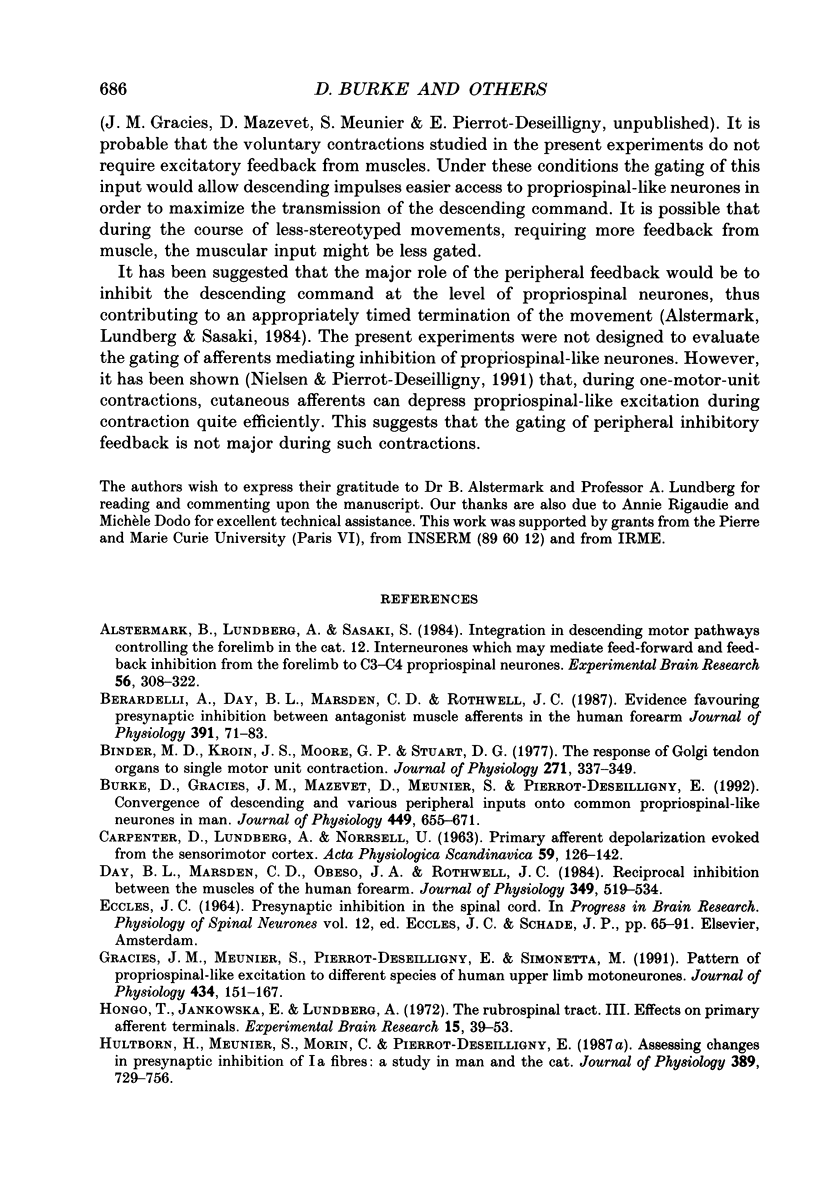
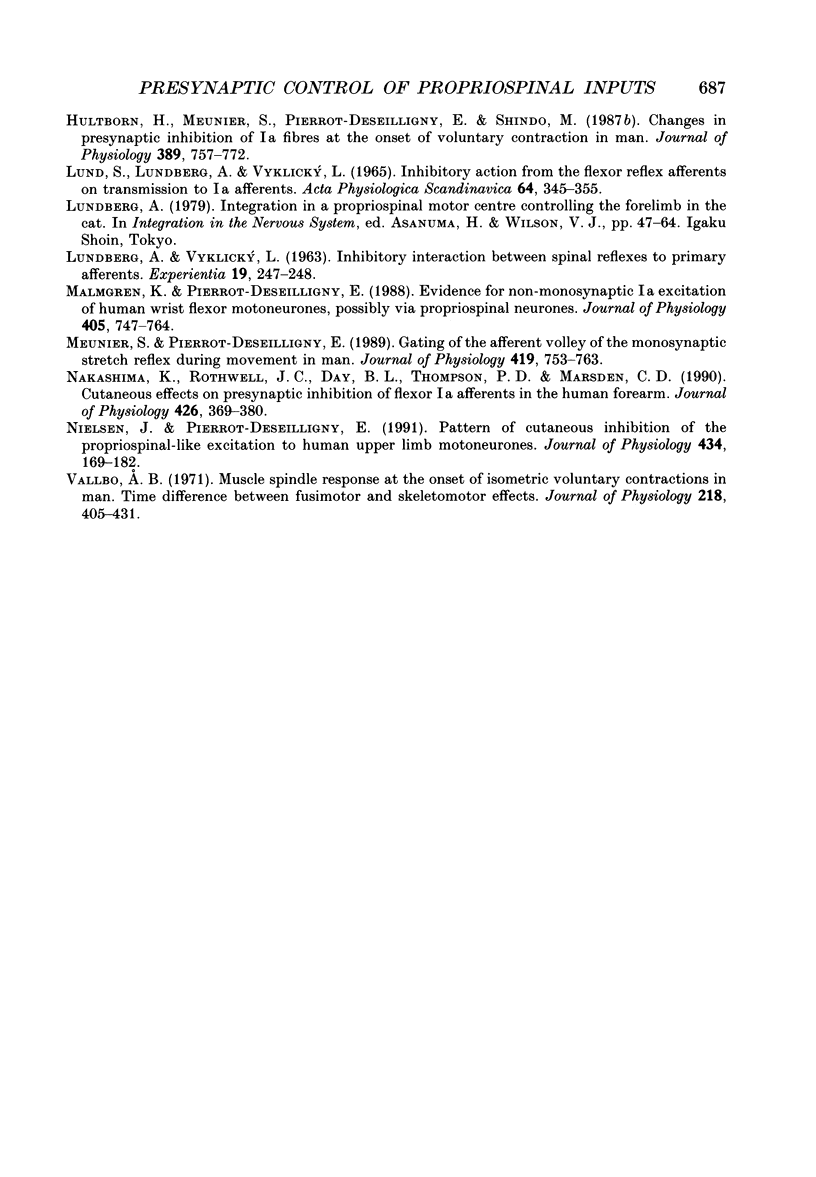
Selected References
These references are in PubMed. This may not be the complete list of references from this article.
- Alstermark B., Lundberg A., Sasaki S. Integration in descending motor pathways controlling the forelimb in the cat. 12. Interneurones which may mediate descending feed-forward inhibition and feed-back inhibition from the forelimb to C3-C4 propriospinal neurones. Exp Brain Res. 1984;56(2):308–322. doi: 10.1007/BF00236286. [DOI] [PubMed] [Google Scholar]
- Berardelli A., Day B. L., Marsden C. D., Rothwell J. C. Evidence favouring presynaptic inhibition between antagonist muscle afferents in the human forearm. J Physiol. 1987 Oct;391:71–83. doi: 10.1113/jphysiol.1987.sp016726. [DOI] [PMC free article] [PubMed] [Google Scholar]
- Binder M. D., Kroin J. S., Moore G. P., Stuart D. G. The response of Golgi tendon organs to single motor unit contractions. J Physiol. 1977 Oct;271(2):337–349. doi: 10.1113/jphysiol.1977.sp012003. [DOI] [PMC free article] [PubMed] [Google Scholar]
- Burke D., Gracies J. M., Mazevet D., Meunier S., Pierrot-Deseilligny E. Convergence of descending and various peripheral inputs onto common propriospinal-like neurones in man. J Physiol. 1992 Apr;449:655–671. doi: 10.1113/jphysiol.1992.sp019107. [DOI] [PMC free article] [PubMed] [Google Scholar]
- CARPENTER D., LUNDBERG A., NORRSELL U. PRIMARY AFFERENT DEPOLARIZATION EVOKED FROM THE SENSORIMOTOR CORTEX. Acta Physiol Scand. 1963 Sep-Oct;59:126–142. doi: 10.1111/j.1748-1716.1963.tb02729.x. [DOI] [PubMed] [Google Scholar]
- Day B. L., Marsden C. D., Obeso J. A., Rothwell J. C. Reciprocal inhibition between the muscles of the human forearm. J Physiol. 1984 Apr;349:519–534. doi: 10.1113/jphysiol.1984.sp015171. [DOI] [PMC free article] [PubMed] [Google Scholar]
- ECCLES J. C. PRESYNAPTIC INHIBITION IN THE SPINAL CORD. Prog Brain Res. 1964;12:65–91. doi: 10.1016/s0079-6123(08)60618-4. [DOI] [PubMed] [Google Scholar]
- Gracies J. M., Meunier S., Pierrot-Deseilligny E., Simonetta M. Pattern of propriospinal-like excitation to different species of human upper limb motoneurones. J Physiol. 1991 Mar;434:151–167. doi: 10.1113/jphysiol.1991.sp018463. [DOI] [PMC free article] [PubMed] [Google Scholar]
- Hongo T., Jankowska E., Lundberg A. The rubrospinal tract. 3. Effects on primary afferent terminals. Exp Brain Res. 1972;15(1):39–53. doi: 10.1007/BF00234957. [DOI] [PubMed] [Google Scholar]
- Hultborn H., Meunier S., Morin C., Pierrot-Deseilligny E. Assessing changes in presynaptic inhibition of I a fibres: a study in man and the cat. J Physiol. 1987 Aug;389:729–756. doi: 10.1113/jphysiol.1987.sp016680. [DOI] [PMC free article] [PubMed] [Google Scholar]
- Hultborn H., Meunier S., Pierrot-Deseilligny E., Shindo M. Changes in presynaptic inhibition of Ia fibres at the onset of voluntary contraction in man. J Physiol. 1987 Aug;389:757–772. doi: 10.1113/jphysiol.1987.sp016681. [DOI] [PMC free article] [PubMed] [Google Scholar]
- LUNDBERG A., VYKLICKY L. Inhibitory interaction between spinal relexes to primary afferents. Experientia. 1963 May 15;19:247–248. doi: 10.1007/BF02151360. [DOI] [PubMed] [Google Scholar]
- Lund S., Lundberg A., Vyklický L. Inhibitory action from the flexor reflex afferents on transmission to Ia afferents. Acta Physiol Scand. 1965 Aug;64(4):345–355. doi: 10.1111/j.1748-1716.1965.tb04189.x. [DOI] [PubMed] [Google Scholar]
- Malmgren K., Pierrot-Deseilligny E. Evidence for non-monosynaptic Ia excitation of human wrist flexor motoneurones, possibly via propriospinal neurones. J Physiol. 1988 Nov;405:747–764. doi: 10.1113/jphysiol.1988.sp017359. [DOI] [PMC free article] [PubMed] [Google Scholar]
- Meunier S., Pierrot-Deseilligny E. Gating of the afferent volley of the monosynaptic stretch reflex during movement in man. J Physiol. 1989 Dec;419:753–763. doi: 10.1113/jphysiol.1989.sp017896. [DOI] [PMC free article] [PubMed] [Google Scholar]
- Nakashima K., Rothwell J. C., Day B. L., Thompson P. D., Marsden C. D. Cutaneous effects on presynaptic inhibition of flexor Ia afferents in the human forearm. J Physiol. 1990 Jul;426:369–380. doi: 10.1113/jphysiol.1990.sp018143. [DOI] [PMC free article] [PubMed] [Google Scholar]
- Nielsen J., Pierrot-Deseilligny E. Pattern of cutaneous inhibition of the propriospinal-like excitation to human upper limb motoneurones. J Physiol. 1991 Mar;434:169–182. doi: 10.1113/jphysiol.1991.sp018464. [DOI] [PMC free article] [PubMed] [Google Scholar]
- Vallbo A. B. Muscle spindle response at the onset of isometric voluntary contractions in man. Time difference between fusimotor and skeletomotor effects. J Physiol. 1971 Oct;218(2):405–431. doi: 10.1113/jphysiol.1971.sp009625. [DOI] [PMC free article] [PubMed] [Google Scholar]


